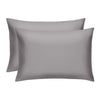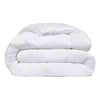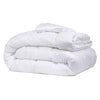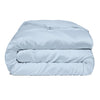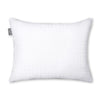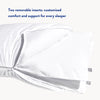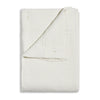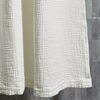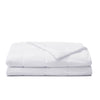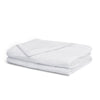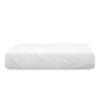
If you've ever wondered, "Are dryer sheets fabric softener?" you're not alone. The laundry aisle is packed with products promising softer, fresher clothes, but the differences between them aren't always crystal clear. Deciding how to handle static cling and keep fabrics cozy can get tricky, especially with so many opinions out there. This guide will break down the misconceptions, highlight the differences between dryer sheets and fabric softener, and dive into their benefits, drawbacks, and eco-friendly alternatives. Let’s make your laundry routine smarter and simpler.
What Are Fabric Softeners and How Do They Work?
Fabric softeners are designed to soften clothes, reduce static cling, and add a fresh scent. They work by coating fabric fibers with smooth, lubricating chemicals that reduce friction and make fabrics feel gentler to the touch. These products come in two main forms: liquid fabric softeners, added during the rinse cycle, and dryer sheets, which are tossed in with your laundry during the drying process.
The key lies in their positively charged molecules, which neutralize static-causing negative charges, leaving your clothes soft, manageable, and fresh. For households focused on maintaining cleaner fabrics and long-lasting freshness, laundry essentials like detergent sheets can pair well with softeners, streamlining your routine while reducing waste.
What Are the Benefits of Using Dryer Sheets in Laundry?
-
Reduced Static Cling: Dryer sheets contain ingredients that neutralize static, keeping clothes separate and minimizing those irritating shocks.
-
Softened Fabrics: By depositing softening agents on your laundry, they make fabrics feel smooth and comfortable against your skin.
-
Wrinkle Reduction: They help reduce wrinkles, particularly when clothes are removed from the dryer promptly.
-
Fresh Scent: Dryer sheets add a light, pleasant fragrance, keeping your clothes smelling clean longer.
-
Ease of Use: With dryer sheets, there’s no extra step—just toss one in with your load, and you’re good to go.
Are Dryer Sheets Fabric Softener?
Yes, dryer sheets act as fabric softeners, but they differ from liquid versions in how they’re used. Both aim to soften clothes, minimize static, and add fragrance. Dryer sheets coat fabrics with softening agents within the heat of the dryer, while liquid softeners are added during the rinse cycle. Despite these differences, they share the same goal of enhancing the softness and freshness of your fabrics.
How Do Dryer Sheets Differ From Liquid Fabric Softeners?
The main distinction between dryer sheets and liquid fabric softeners lies in how they’re applied and their composition. Liquid softeners are poured into the rinse cycle to coat fabrics while they’re wet. Dryer sheets go into the dryer, where heat activates their softening and anti-static ingredients.
Their formulas also vary: dryer sheets are often designed with additional ingredients targeting static and wrinkles, while liquid softeners may struggle more with static reduction. On the other hand, dryer sheets can occasionally leave residues on dryer components and fabrics, making the choice a matter of preference and laundry habits.
Can You Use Both Dryer Sheets and Liquid Fabric Softener Together?
While you can technically use both at once, it’s not recommended. Combining them often leads to chemical residues building up on clothes and laundry machines. This residue can reduce the absorbency of towels, diminish detergent performance, and leave fabrics feeling greasy or waxy. Instead, pick one product based on your preferences that will provide sufficient softness and static control without overcomplicating your routine.
If you’re looking for cleaner laundry with fewer additives, eco-friendly options like Miracle Made detergent sheets can simplify your washing process while minimizing chemical build-up.
What Chemicals Are Typically Found in Dryer Sheets and Fabric Softeners?
Dryer sheets and fabric softeners contain a mix of ingredients designed to soften fabrics and add fragrance. Common components include cationic surfactants, responsible for coating fabrics, which may cause skin irritation for sensitive individuals. These products often include fragrances, sometimes with phthalates, as well as emulsifiers that help ingredients mix effectively. Some formulations also use alcohols and esters for added scent and performance.
While ingredient transparency has improved due to regulations, specifics vary by brand. Many manufacturers now offer “free and clear” options for those with sensitivities, allowing consumers to enjoy softness without added dyes or perfumes.
Do Dryer Sheets Really Reduce Static Cling Effectively?
Absolutely. Dryer sheets are highly effective at reducing static cling, but it's also important to regularly clean your lint filter for optimal dryer performance. Their positively charged components neutralize the negative charges that cause static electricity, keeping fabrics from sticking together. The warmth of the dryer helps activate these ingredients, ensuring an even spread across garments, including socks.
This can be especially helpful during dry weather or colder months when static is more noticeable. For particularly stubborn static, combining dryer sheets with techniques like increasing household humidity or using breathable bedding can deliver the best results.
Are There Eco-Friendly Alternatives to Dryer Sheets and Fabric Softeners?
Yes, there are excellent eco-friendly alternatives to traditional dryer sheets and liquid softeners.
-
Wool Dryer Balls: A popular natural option, these soften fabric and reduce drying time by improving airflow.
-
White Vinegar: Adding a half cup of vinegar to the rinse cycle naturally softens fabric while removing detergent residue.
-
Baking Soda: Enhances fabric softness when added during the wash cycle and helps neutralize odors.
-
Plant-Based Softeners: Many brands now offer biodegradable softeners free from harsh chemicals.
Pairing these alternatives with sustainable laundry solutions like detergent sheets can help you create an eco-conscious laundry routine without sacrificing results.
What Effects Do Dryer Sheets Have on Clothing and Towels?
While dryer sheets offer multiple benefits, they can leave long-term build-up on clothes and towels. This residue may affect absorbency, particularly in towels, and create a waxy coating that makes fabrics feel less breathable over time. Additionally, they can reduce the effectiveness of flame-retardant finishes on children’s sleepwear.
To minimize these effects, consider using dryer sheets sparingly or alternating with more natural options. For long-lasting fabric quality, focus on washing with mild products such as Miracle Made detergent sheets, which are gentle yet effective.
What Do Laundry Experts Say About Using Dryer Sheets as Fabric Softener?
-
Avoid Overuse to Prevent Residue Build-Up: Experts support dryer sheets for softening clothes but warn against excessive use. Too many sheets can lead to chemical build-up that affects absorbency and may irritate sensitive skin.
-
Consider Dryer Balls as a Sustainable Option: Many laundry professionals recommend wool dryer balls as an eco-friendly alternative. They soften fabrics, reduce static, and avoid the residue associated with dryer sheets.
-
Explore Liquid Fabric Softener for Certain Fabrics: In some cases, liquid fabric softeners may better suit fabrics like microfiber that can benefit from wet-cycle treatment.
-
Do Not Use with Flame-Resistant Clothing: Dryer sheets can reduce flame-retardant effectiveness, so avoid using them with children’s sleepwear or safety apparel.
-
Clean Your Lint Trap Regularly: Dryer sheets contribute to lint accumulation. Cleaning the trap after every load maintains dryer efficiency and reduces fire risks.
Conclusion
Dryer sheets and liquid fabric softeners both serve the same purpose: making laundry softer, fresher, and free of static. However, they differ in application, performance, and long-term effects on fabrics. Dryer sheets provide convenience and static reduction, while liquids may suit specific fabrics better. To protect your clothes and extend their lifespan, choose one product that aligns with your preferences and consider incorporating eco-friendly alternatives for balance.
For those who want freshness without compromise, try pairing sustainable laundry habits with innovative products like detergent sheets. With thoughtful choices, your laundry can be both effective and environmentally friendly.
Sources:
How to get rid of static cling on clothes
An Easy Guide to Understanding How Surfactants Work
How to Thoroughly Clean Your Dryer Vent


